Alstroemeria: description, planting and care
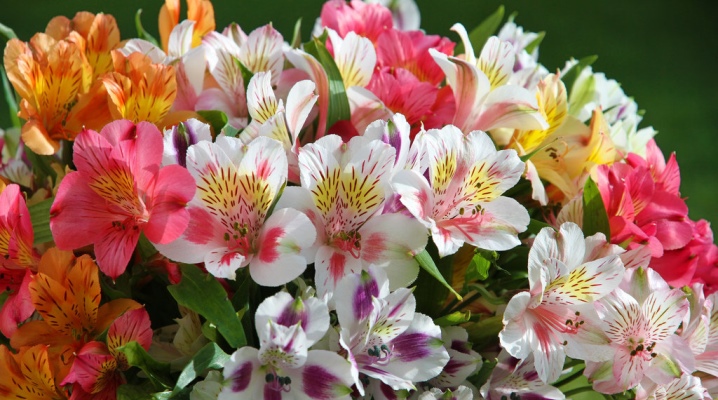
Alstroemeria is a very beautiful culture. It is sometimes called the "Peruvian lily" because of the similarities. Flowers are just as graceful and spectacular, which is why they are often grown for cutting into bouquets. Also, such plants decorate balconies and flower beds. To grow a flower, you just need to know the simple rules of planting and care. We will talk about this in the article.




Peculiarities
The description should start with the fact that the culture is perennial. It is a herbaceous plant with tuberous roots. The stem is straight, flexible. Usually, the height varies from 80 to 200 cm, although there are also undersized varieties.
The flowers of the culture are luxurious. The diameter of each can reach 5-6 cm. The color is different. There are snow-white, soft and bright pink, yellow, orange, purple, red flowers. At the same time, there are varieties that combine 2 or 3 shades in each flower at once. A characteristic feature of the culture, regardless of the variety, is the thin small stripes on the petals.
An interesting fact - alstroemeria is odorless. To some, this may seem like a drawback, but for people with a tendency to allergies, such a nuance will only be a plus.
Alstroemeria can be grown in the garden to decorate the area. At home, it can be kept in a pot. Cut flowers in the water look fresh for a long time (up to 2 weeks).




Varieties
Today there are many types and varieties of this culture. Let's consider the most popular ones.
- Virginia. It is one of the most beloved varieties grown for bouquets. Snow-white wavy petals form delicate flowers that stand out effectively against the background of greenery. Such flowers grow up to 70 cm. Flowering begins in June.

- "Beauty". A powerful bush of one and a half meters in height is covered with purple buds, creating an expressive spectacle. Great for garden decoration. Flowering occurs in spring and late summer.

- Canaria. Bright canary-colored flowers grow up to 1.5 meters. Flowering occurs in two stages (spring and early autumn).
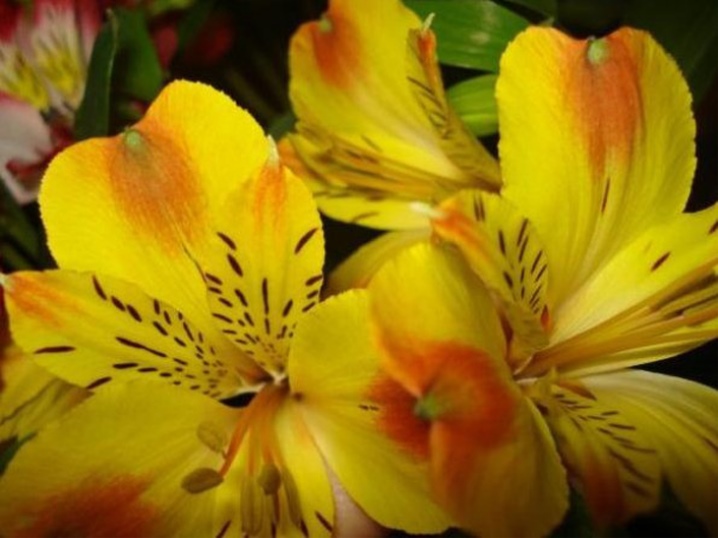
- White Wings. A very beautiful white flower can grow up to 1.5-2 m. The flowers are large, delight gardeners with their beauty all summer long. A break in flowering is observed at the end of July.

- "Alicia". This hybrid is somewhat reminiscent of a chrysanthemum. Culture blooms all summer. The color of the petals is white-pink.

- Golden. The bright yellow with an orange tint, the flowers are quite tall. The height can be up to a meter or more.

- Brazilian. Elegant red flowers can grow up to 2 meters. The name is due to the place of origin of this species.

- "Nano". This is a stunted variety. The neat plants, reaching only ten centimeters in height, are ideal for home growing. The color of the petals is yellow.

- "Nadya". This variety has a burgundy color. Plant height is average (70-80 cm).

- Roma. This variety is distinguished by a raspberry shade of petals. The growth of the culture is 70 cm.

- "Diva". This variety will appeal to romantic natures. The petals are very delicate pink. The flower grows up to 80 cm.

Optimal disembarkation time
The right time to plant a crop outdoors varies by region. The procedure is carried out after the end of the frost. It is necessary that the soil warms up to 20 degrees and the air temperature also stabilizes. In many regions of the country, such conditions appear at the end of May. In some places, planting is carried out in early June.

As for sowing seeds for seedlings, this is done at the end of February. You can postpone the procedure to the beginning of March. At home, creating the environment necessary for the full growth and development of flowers is also easy.


How to plant?
A well-lit area in the garden should be chosen. In this case, it is better that a light partial shade forms there during the day. It's good if the place is protected from the wind. The soil must be nutritious, well-permeable. The acidity should be chosen weak or neutral.
The hole is made about 30 cm deep. The optimum width of the planting recess is from 40 to 50 cm. It is important that the roots of a young plant fit freely in the pit. A drainage layer is laid at the bottom. Rotted compost is placed on top of it. The layer thickness should be about 7-8 cm.

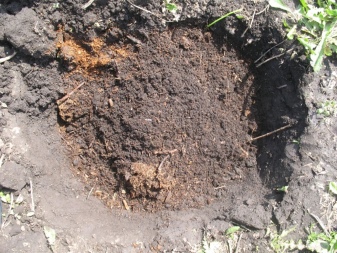
The plant is carefully rolled over with an earthen lump. Then the hole is filled up. The soil is slightly compacted and watered well. To prevent evaporation of moisture from the ground, the area around the flower is mulched. For this, you can use peat or sawdust.


If several flowers are planted on one bed, the distance between them should not be less than 30 cm.If the variety is high, this indicator increases to 50 cm.

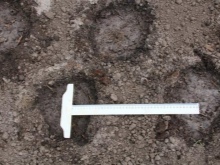
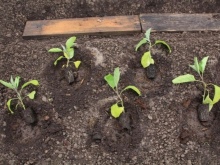
How to take care of it properly?
Consider several important steps in caring for alstroemeria.


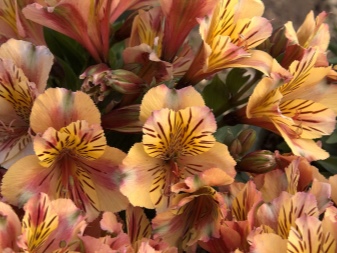
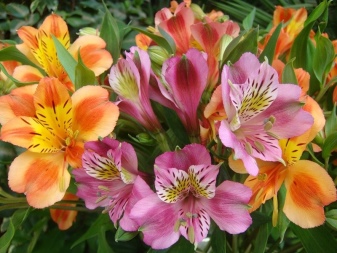
Watering
The culture needs moderately moist soil. Watering should be regular, but not excessive. Once a week is enough. If the summers are very hot and dry, you can irrigate twice a week. In rainy periods, the flowers are bypassed with moisture obtained from rainfall.
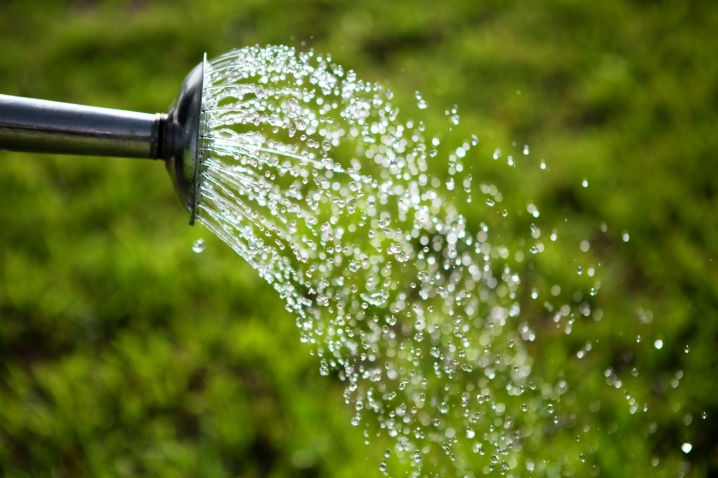
Top dressing
Fertilization is an important point. The culture is fed every decade. At the same time, mineral compositions and organic matter alternate. During the period of leaflet development, plants especially need nitrogen.
During budding, they need phosphorus. Potassium is also a good addition. It can be added to soil in the form of wood ash. Do this 3 or 4 times a season.

Pruning
If the plant is not pruned, many flowers will form on it, but small in size. Therefore, about 1/3 of the shoots are cut in the spring. Also, the state of culture is monitored throughout the season. Faded foliage, dried flowers should be removed in a timely manner. This not only helps maintain the aesthetics of the garden, but also protects the plants from disease.
In place of cut faded buds, new ones will appear. So the culture will be fresh and elegant throughout the season. Leave dry flowers only if you plan on harvesting seeds.



Transfer
The root system of the culture grows very quickly. Bushes with numerous shoots do not bloom very well. Therefore, every year, an adult flower is moved to a new location. The procedure is carried out in spring or autumn. At the same time, the bush is divided.
When planting divided plants, the same rules are followed as when planting seedlings. Do not forget that the size of the fossa must correspond to the dimensions of the root system.



Wintering
Despite the fact that some crop varieties are resistant to light frosts, wintering in Russian conditions is still a difficult test for them. That's why to preserve the flower in the open field until spring, some measures should be taken.
After the first frost, the shoots are cut off. Leave a maximum of 10 cm above the ground. Then the bushes are sprinkled with fallen leaves. The layer should be thick. The leaves are covered with foil. Plain garden soil mixed with humus is placed on top.
All actions are carried out in dry weather. It is important that the top layer of the earth is not wet. If your area has harsh winters, it's best to play it safe. Dig up the flowers and transplant them into containers (pots or boxes).Then take the plantings to the insulated basement or to the glazed balcony. So you are guaranteed to protect the bushes from freezing.


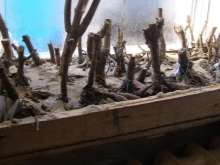
Reproduction methods
Most often, alstroemeria is propagated by seeds or by dividing the bush. Let's take a look at each of these methods separately.

Seeds
The seed method of growing crops allows you to get healthy and beautiful plants. but they will begin to bloom only in the third year of life... In addition, it should be borne in mind that even with self-collection of seeds from species plants, parental characteristics may be lost. This probability increases if the variety is hybrid.
But in any case, the flower will turn out beautiful, even if it is unlike the one from which the seeds were taken. Perhaps you will have a completely new unique variety.
Seed material must be collected carefully: the fruits of the culture are fragile. To prevent the seeds from scattering, you can cover the flower with gauze before harvesting. The seed should be stratified before planting. To do this, wrap it with a damp cloth and put it in the refrigerator. The best place is the bottom shelf. The seeds are stored there for 2 months.
Sowing is done at the end of winter. It is advisable to prepare the soil mixture for planting according to the recipe. Sod land is mixed with leaf humus (1: 3). You can also add some peat and coarse sand.

Picking for such colors is undesirable. Therefore, it is better to sow immediately in separate containers. Drainage and prepared fertile soil are placed at the bottom of each glass. Then a seed is placed there.
The planting material is sprinkled with a layer of soil, about 1 cm. The containers are covered with polyethylene. This creates a greenhouse environment. The optimum temperature level for planting is 18 degrees. The sprouts can be seen after 3-4 weeks.
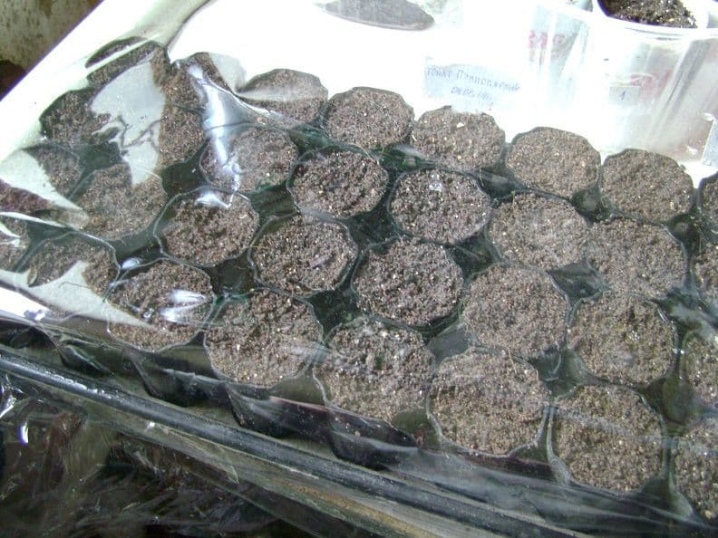
Periodically, young plants are ventilated. The soil is moistened. When seedlings appear, polyethylene is removed. The containers with flowers are placed in a warm and well-lit place. At this stage, a temperature of 20-25 degrees is desirable.
The light must fall on the plants for at least 12 hours a day. If necessary, use artificial light sources. Do not forget about moderate watering.
In the process of growing seedlings, you need to make 3 feeding. For the first time, the soil is watered with an organic solution (when the first leaf appears). The mineral composition is added for the second time. This is done in the phase of the third leaf. For the third time (after 3 weeks), plants are also fertilized with a mineral complex.
If the plants were nevertheless planted in one large box, the pick is carried out when the third leaf appears. 2 weeks before moving the flowers into the open ground, they begin to harden. Landings are regularly carried out on the street, gradually increasing the time of their stay in the air. Landing on the site is done at the end of spring.


Crop seeds can be stored for 3 years. All this time they will be suitable for planting.
By dividing the bush
This method guarantees the preservation of maternal characteristics. Besides, plants obtained in this way delight with flowers already in the year of planting (if the procedure is carried out in the spring) or in a year (if the division is carried out in the fall).
Experts advise dividing plants in the fall, immediately after flowering ends. In this way, the planted flowers will be able to adapt and take root before the onset of frost. Each division must have a minimum of 6 dormant buds. A sharp knife is used for cutting. Places of cuts are sprinkled with coal powder. Colloidal sulfur can also be used. The resulting plants are immediately distributed to new places.


Growing a house in pots
Indoor alstroemeria is best placed on the southern windowsill. She will be there all the time, except for the summer. In hot weather, the flower should be stored in a shaded, cool place. The maximum temperature that a plant can withstand without losing its decorative effect is 28 degrees.
Although the culture is thermophilic, close placement of convectors in winter is also undesirable... Heaters dry the air, which negatively affects the flowers. If you decide to decorate a balcony or loggia with a plant, then remember that the minimum permissible temperature level is 10 degrees. In the cold, the culture will not bloom, and if the thermometer falls too low, the flower may die.



The soil for a houseplant must be nutritious. A mixture of peat, humus, leafy earth and perlite is perfect. Don't forget about drainage. You need to water the plants with clean, settled water. An ideal option is a non-chlorinated drinking liquid.
In summer, watering is carried out as the topsoil dries out. In winter, water procedures are carried out less often. You cannot fill the flower - the roots may begin to rot. If the flower stands next to the battery, and the heating works at full capacity, you can spray it from a spray bottle every 3-4 days.
Much attention should be paid to the fertilization of the crop. At the beginning of the first flowering, an aqueous solution of ash can be added to the soil. For 1 liter of water, take half a tablespoon of the product. Then the flower is fed 2 times a year. Phosphorus preparations are recommended.
Good for culture and potassium. And here It is better not to use fertilizers with a high nitrogen content. Such formulations can negatively affect the development of buds.
It is better to transplant alstroemeria in spring. The capacity should be several centimeters wider than the dimensions of the root system. The procedure should be carried out very carefully so as not to damage the roots.


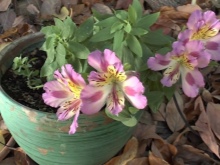
Diseases and pests
The culture can be infected with a fungal infection. This usually happens with excessive watering. The most common ailments are root rot and late blight. In the first case, the foliage begins to turn yellow. You may also notice rotting at the base of the stem. In the second case, the foliage loses its richness of color and withers.
In both situations, it is necessary to treat all parts of the flower (including the root system) with fungicides. For this, the culture is dug up. However, treatment can only help at the initial stage of the disease. If the situation is neglected, the plant will have to be destroyed.
As for pests, there are several dangers for alstroemeria. Presence spider mite can be identified by light spots and cobwebs on the green part of the plant. In case of such a nuisance, the flower is treated with acaricides 3 times. There is a ten-day gap between procedures.
Thrips are fought with the help of the drug Confidor. You can determine the presence of a problem by the silvery marks on the foliage. Prevention of attacks slugs is carried out by scattering crushed egg shells or tree bark around the flower.
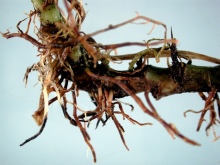


Combination with other colors
Low varieties of culture are often used to decorate walking paths, flower beds. Low-growing varieties grown in pots are taken out into the garden during the summer. They are placed near resting places, in open gazebos. High alstroemerias become a spectacular backdrop for other flowering and just green crops.

In gardens, alstroemeria is often placed next to roses. These flowers are also in bouquets. They look luxurious together, emphasizing the dignity of each other. An expressive combination is obtained with chrysanthemums, gerberas, irises. Another successful partner for culture is eustoma.


The combination of shades can be very different. Basically, white is combined with pink, red, purple, blue. Combinations of red and orange look great. A romantic bouquet can be made of pink and red flowers.

For information on how to plant alstroemeria in the ground, see the video below.







































































































The comment was sent successfully.